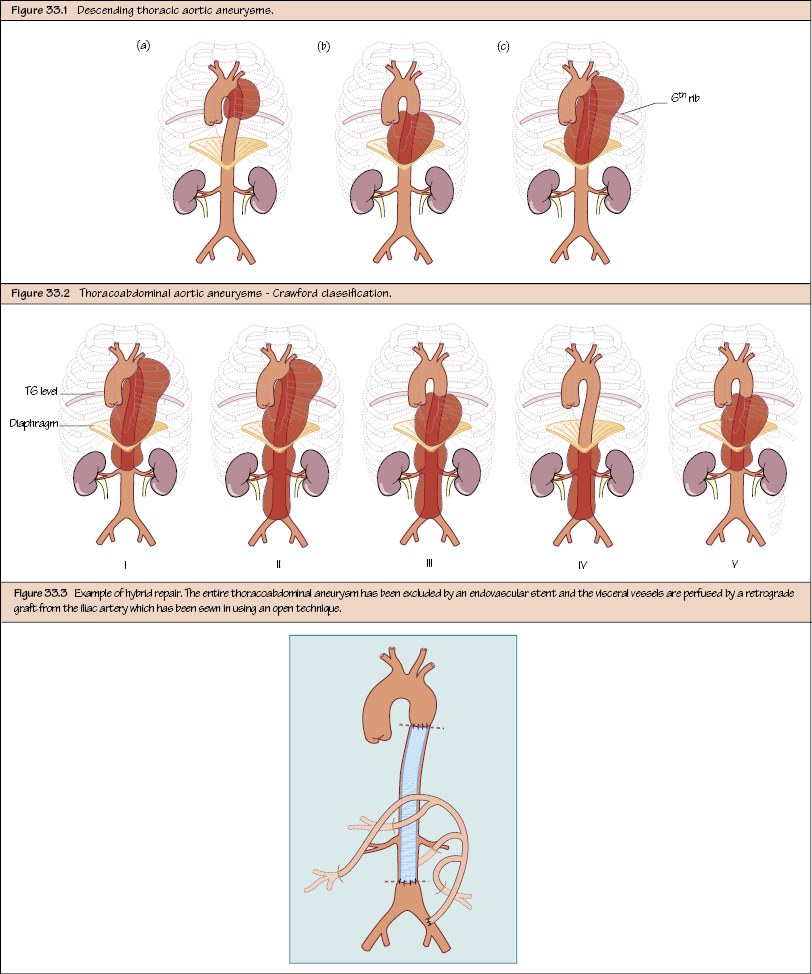Thoracic Aortic Disease II: Aneurysms Aneurysms can affect the thoracic aorta in isolation (thoracic aortic aneursysm [TAA]) or can extend into the abdominal aorta (thoracoabdominal aortic aneurysms [TAAA]). The most common location for TAAs is the descending thoracic aorta. Where the ascending aorta or aortic arch is involved, this is the domain of the cardiothoracic surgeon. TAAs in the descending aorta are classified into: Risk factors of smoking, hypertension and hypercholesterolaemia, but also particularly related to: For more on the aetiology of aneurysms, see Chapter 31.

Thoracic Aortic Aneursym
Key Facts
Aetiology
Presentation
Stay updated, free articles. Join our Telegram channel

Full access? Get Clinical Tree


